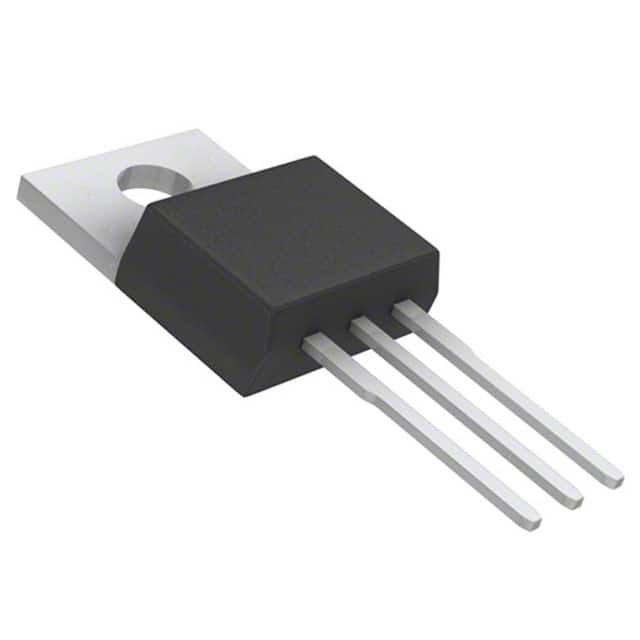SBR30A60CT
Introduction
The SBR30A60CT is a Schottky Barrier Rectifier belonging to the category of power semiconductor devices. This entry provides an overview of the basic information, specifications, pin configuration, functional features, advantages and disadvantages, working principles, application field plans, and alternative models of the SBR30A60CT.
Basic Information Overview
- Category: Power Semiconductor Device
- Use: Rectification in power supply circuits, inverters, and other power electronic applications.
- Characteristics: High efficiency, low forward voltage drop, fast switching speed.
- Package: TO-220AB
- Essence: Schottky Barrier Rectifier
- Packaging/Quantity: Typically packaged in reels or tubes containing multiple units.
Specifications
- Voltage Rating: 60V
- Current Rating: 30A
- Forward Voltage Drop: Typically 0.65V at 15A
- Reverse Leakage Current: Maximum 50µA at 60V
- Operating Temperature Range: -55°C to 175°C
Detailed Pin Configuration
The SBR30A60CT typically has three pins: 1. Anode 2. Cathode 3. Gate (for some models with additional features)
Functional Features
- Low forward voltage drop leading to high efficiency.
- Fast switching speed enabling high-frequency operation.
- Low reverse leakage current enhancing overall performance.
Advantages and Disadvantages
Advantages
- High efficiency due to low forward voltage drop.
- Fast switching speed allows for high-frequency operation.
- Low reverse leakage current contributes to improved performance.
Disadvantages
- Higher cost compared to standard rectifier diodes.
- Limited voltage and current ratings compared to some other power semiconductor devices.
Working Principles
The SBR30A60CT operates based on the Schottky barrier principle, where the metal-semiconductor junction forms a low barrier height, resulting in lower forward voltage drop and faster switching characteristics compared to conventional PN-junction diodes.
Detailed Application Field Plans
The SBR30A60CT finds extensive use in various power electronic applications, including: - Switching power supplies - DC-DC converters - Inverters - Motor drives - Solar power systems
Detailed and Complete Alternative Models
Some alternative models to the SBR30A60CT include: - SBR20A60CT: Lower current rating but similar voltage rating. - SBR30A80CT: Higher voltage rating with similar current rating. - SBR30A60CP5: Similar specifications with different package type.
In conclusion, the SBR30A60CT is a versatile power semiconductor device with high efficiency and fast switching characteristics, making it suitable for a wide range of power electronic applications.
[Word Count: 387]
Senaraikan 10 soalan dan jawapan biasa yang berkaitan dengan aplikasi SBR30A60CT dalam penyelesaian teknikal
What is SBR30A60CT?
- SBR30A60CT is a Schottky Barrier Rectifier diode designed for high current density and low forward voltage drop applications.
What are the key features of SBR30A60CT?
- The key features include low forward voltage drop, high current capability, fast switching speed, and high junction temperature.
What are the typical applications of SBR30A60CT?
- Typical applications include freewheeling diodes, OR-ing diodes, power factor correction diodes, and reverse polarity protection diodes in power supplies, inverters, and motor control systems.
What is the maximum forward voltage drop of SBR30A60CT?
- The maximum forward voltage drop at 15A is typically around 0.55V.
What is the maximum reverse voltage rating of SBR30A60CT?
- The maximum reverse voltage rating is 60V.
What is the operating junction temperature range of SBR30A60CT?
- The operating junction temperature ranges from -55°C to +150°C.
How does SBR30A60CT compare to standard silicon diodes?
- SBR30A60CT offers lower forward voltage drop and faster switching speed compared to standard silicon diodes.
Can SBR30A60CT be used in high-frequency applications?
- Yes, SBR30A60CT is suitable for high-frequency applications due to its fast switching characteristics.
What are the recommended mounting and soldering techniques for SBR30A60CT?
- It is recommended to use through-hole or surface mount techniques with proper heat sinking for efficient thermal management.
Where can I find detailed technical specifications and application notes for SBR30A60CT?
- Detailed technical specifications and application notes can be found in the product datasheet provided by the manufacturer or distributor.


